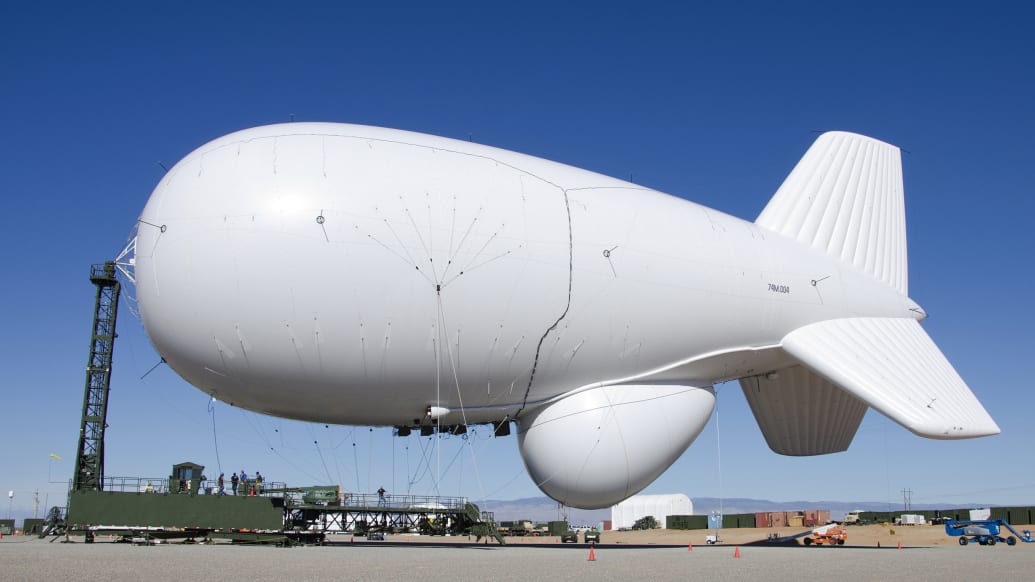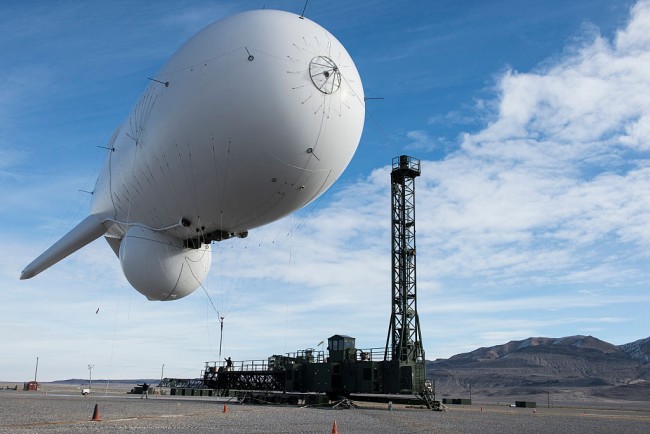The Pentagon’s Shift to High-Altitude Balloons for Surveillance and Defense
In a bid to outpace competition from China and Russia, the Pentagon is embracing an unconventional strategy—utilizing high-altitude balloons. These sophisticated inflatables, capable of soaring between 60,000 and 90,000 feet, are slated to integrate into the Pentagon’s extensive surveillance network, potentially even offering the capability to track hypersonic weapons.
While this concept might seem like a concept out of science fiction, budgetary documents from the Pentagon indicate that this technology is transitioning from the realm of the Department of Defense’s scientific community to becoming an integral part of the military services.
Tom Karako, a senior fellow at the Center for Strategic and International Studies, pointed out the merits of these high-altitude platforms, highlighting their endurance on station, maneuverability, and adaptability for various payloads. The balloons hold promise for multiple mission types, making them an attractive investment for the military.
Over the last couple of years, the Pentagon has already allocated around $3.8 million for balloon projects, and it is projected to allot a staggering $27.1 million in the fiscal year 2023 to advance various initiatives. This demonstrates the Pentagon’s increasing commitment to these unconventional surveillance tools.
Despite recent setbacks, like the failed test of the Pentagon’s own hypersonic weapons program, the deployment of these balloons could represent a silver lining. Their potential to track and deter hypersonic weapons in development provides a ray of hope for the United States.
A standout feature of these balloons is their capacity to augment existing satellite systems in missile tracking. The balloons, designed in a teardrop shape, collect intricate data and navigate using advanced AI algorithms.
Unveiling the Unseen
The Pentagon’s engagement with high-altitude balloons and solar-powered drones for data collection and communication with ground forces has been ongoing for years. However, what’s new is the gradual transition of these balloon projects to military services, facilitating data collection and information transmission to aircraft.
One notable project, the Covert Long-Dwell Stratospheric Architecture (COLD STAR), initially aimed at locating drug traffickers. This project, launched in 2019, involved the deployment of 25 surveillance balloons from South Dakota in a demonstration. While the specifics remain classified, it’s confirmed that COLD STAR has now been integrated into military services.
Additionally, the Pentagon is orchestrating demonstrations that explore the integration of high-altitude balloons and commercial satellites—a combined approach known as the “kill chain.” These balloons have the potential to serve as versatile platforms for communication nodes, intelligence, surveillance, tracking airborne threats, and more. Unlike satellites with predictable orbits, the balloons offer enhanced flexibility.
Moreover, the Pentagon is exploring the use of drones equipped with “stratospheric payloads” alongside balloons to track moving ground targets, establish communications, and intercept electronic signals. This technology is envisaged for integration within the army and U.S. Special Operations Command, as outlined in budget documents.
With the retirement of airborne surveillance aircraft by the Air Force, finding innovative ways to track ground targets has become a priority for the Pentagon.
Not Your Ordinary Balloons
Raven Aerostar, a division of Raven Industries, is at the forefront of balloon production. These balloons are equipped with a flight control unit powered by renewable solar panel-charged batteries. A payload electronics package governs flight safety, navigation, and communication. Wind currents determine their flight path, with varying speeds and directions harnessed for precise movement.
Raven Aerostar employs a proprietary machine-learning algorithm to predict wind directions, complemented by real-time sensor data fusion. Their software oversees balloon fleet piloting and monitoring, manned by skilled flight engineers around the clock.
Stratospheric balloons have proven their ability to complement traditional aircraft and satellites at a fraction of the cost and time. The launch and operation costs of these balloons for weeks or months are significantly lower compared to aircraft or satellite alternatives.
History Repeats
The idea of utilizing balloons for advanced purposes is not new. NASA pioneered helium-filled stratospheric balloons in the 1950s, while the army experimented with these systems at lower altitudes more recently.
The private sector has also dabbled in the balloon market, with Alphabet deploying balloons in 2017 to provide communication support in Puerto Rico after Hurricane Maria.
In the mid-2010s, the army explored a spy blimp program that eventually ended in 2017. Unlike the current high-altitude balloons, this endeavor—known as the Joint Land Attack Cruise Missile Elevated Netted Sensor System (JLENS)—involved tethered blimps designed to track boats, vehicles, drones, and cruise missiles.
While the JLENS program faced challenges, experts like Tom Karako believe that learning from such experiences can pave the way for a brighter future for dirigibles, balloons, and aerostats. The ongoing Pentagon efforts with high-altitude balloons reflect a commitment to embrace innovative technologies that can reshape defense strategies.










